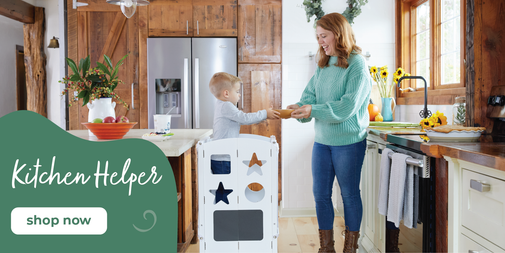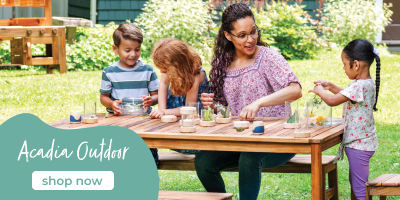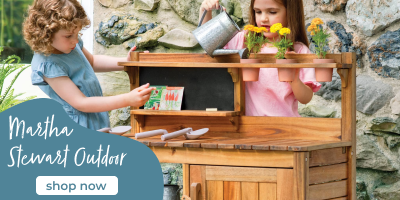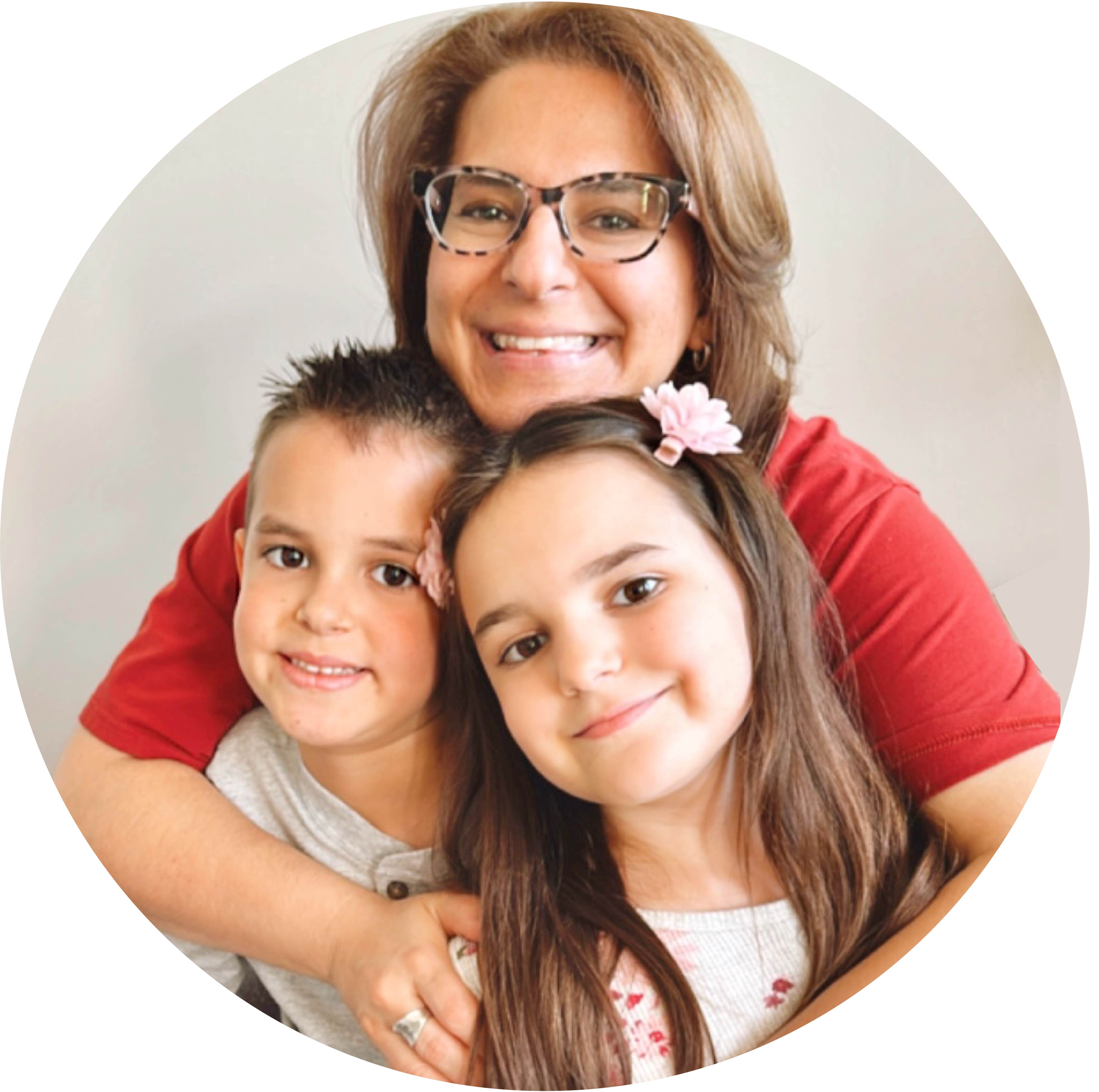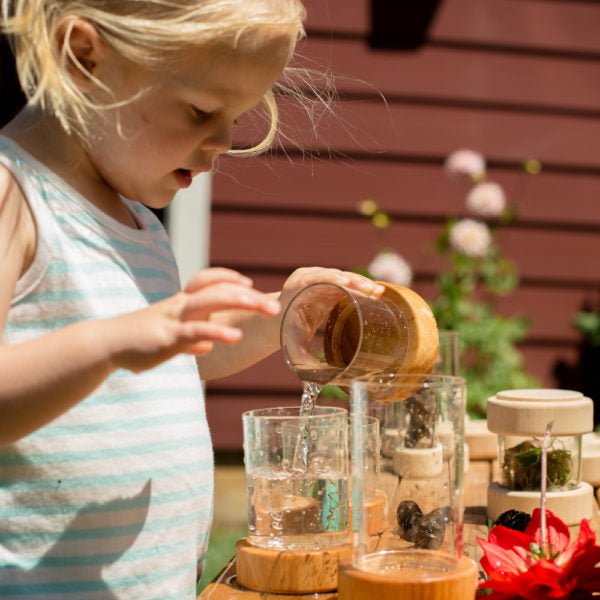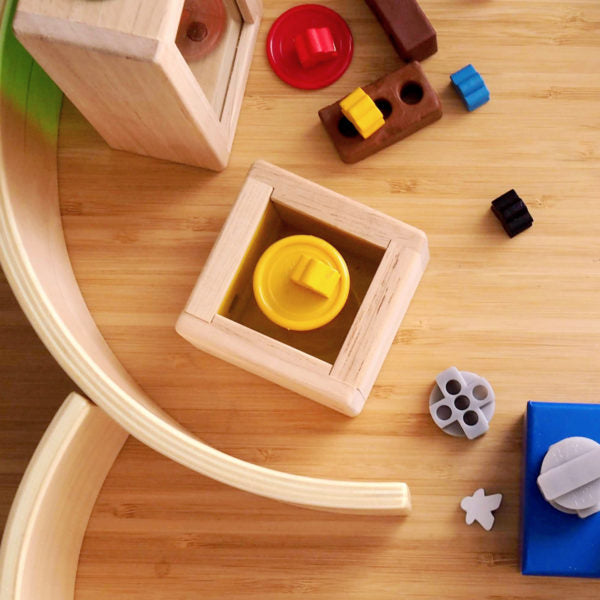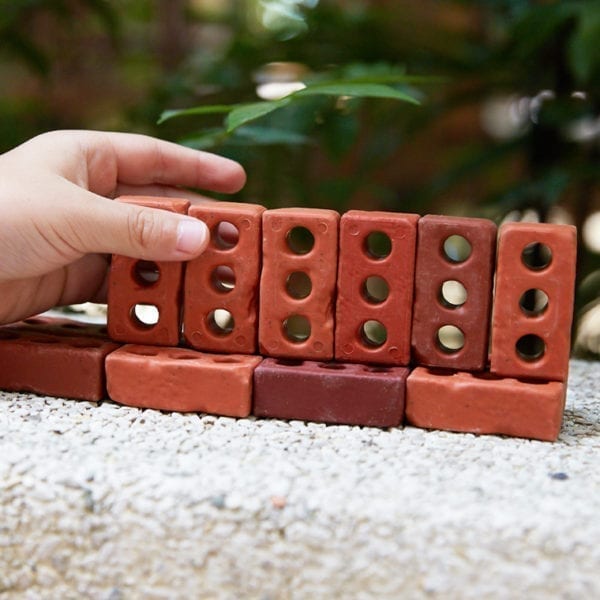Inspire Hands-On Learning Through Loose Parts Play
Loose parts are any open-ended natural or man-made materials that can be moved and reconfigured in multiple ways. These materials can be combined to create patterns and designs, they can be lined up, used to build structures or even used for math play.
 Loose parts play boosts creativity, imagination, focus and concentration, fine and gross motor skills, problem solving skills, hand-eye coordination, literacy and numeracy, along with spatial reasoning. It allows children to independently harness their skills and unique interests into their play, in an unscripted way. This free play allows children to explore texture, shape, color, size, space and early engineering and physics concepts as they stack, line up and sort the materials.
Loose parts play boosts creativity, imagination, focus and concentration, fine and gross motor skills, problem solving skills, hand-eye coordination, literacy and numeracy, along with spatial reasoning. It allows children to independently harness their skills and unique interests into their play, in an unscripted way. This free play allows children to explore texture, shape, color, size, space and early engineering and physics concepts as they stack, line up and sort the materials.

Loose parts play can be supported and prompted by leaving out open-ended materials which can be a combination of nature and man-made items. To create an enticing invitation to play, materials can be left out in a basket or tray, on an easy-to-reach play shelf or on a low table for the child to discover. Without instruction, children will transport, combine and transform the materials. When working together in groups or pairs, social-emotional skills are developed as children communicate, brainstorm and collaborate with one another.

If you want to prompt creative play, a basket or jar of loose parts can be left out with a large roll of paper that has an outline of a person, animal or thing drawn. Children will use the loose parts to fill and decorate the outlined drawing. Loose parts can be left out with prompt cards to help guide or inspire play.
 Another creative play prompt is to arrange natural loose parts (such as flowers or leaves collected from a nature walk) alongside a weaving frame so children can incorporate them into their weave pattern.
Another creative play prompt is to arrange natural loose parts (such as flowers or leaves collected from a nature walk) alongside a weaving frame so children can incorporate them into their weave pattern.
Loose parts can be combined with dry grains, legumes, flowers, leaves, sticks, sand, water and mud for an exciting sensory experience.

Loose parts can be used for pattern play, by creating a pattern with various items, leaving out a tray with the same materials and having your child replicate the pattern or complete it.

Materials can be left out with paper and markers so children can explore tracing letters, shadows and shapes, or even combining loose parts materials with their own drawings to add layers and dimension to their work.
Loose parts can also be used to prompt numeracy or math play. The hands-on approach with visual and tactile materials helps to reinforce math concepts, making them more concrete versus abstract. Sticks or stones can be used as a frame or base with which to create 5, 10 or 20-frame counting boards. Children can use smaller loose parts as manipulatives with which to practice one-to-one correspondence as they place the loose part and count.
